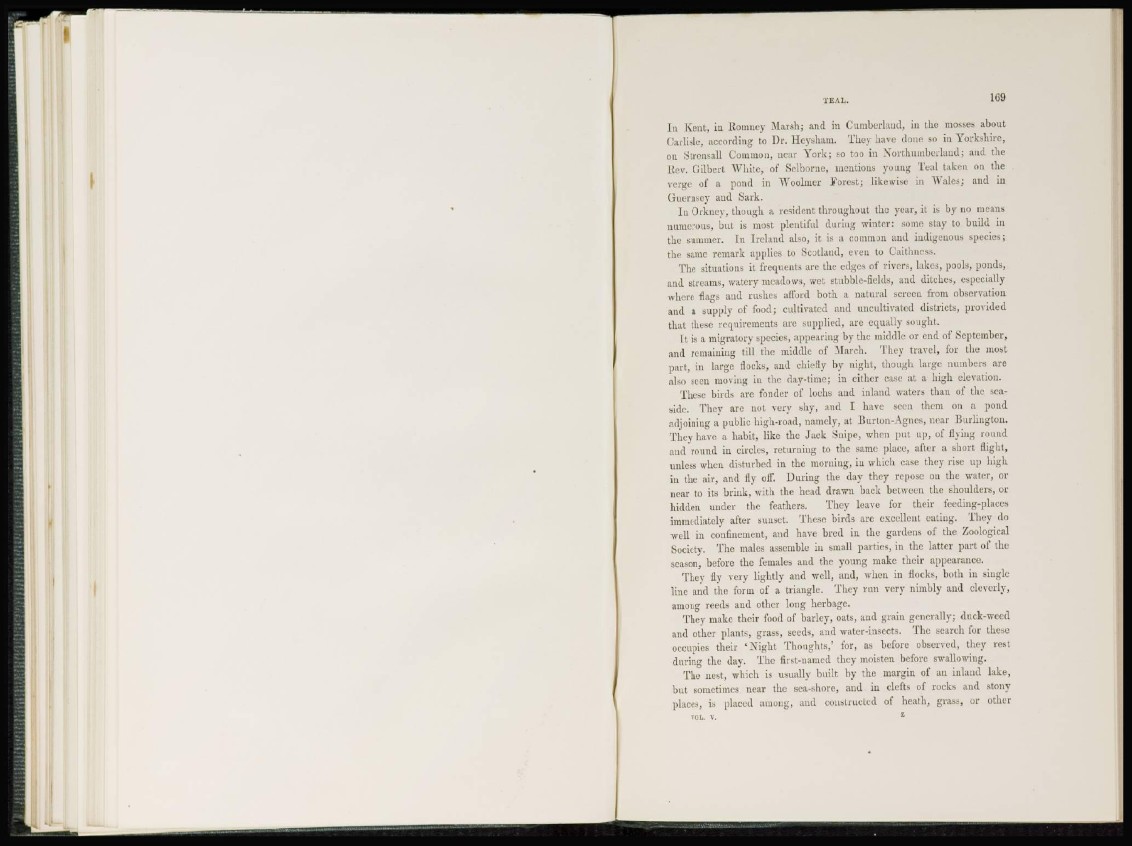
T E A L . 169
I n Kent, in Romncy Marsh; and in Cumberland, in the mosses about
Carlisle, according to Dr. Hcyshani. They have done so m Yorkshire,
on Strensall Common, near York; so too in Northumberland; and the
Rev. Gilbert White, of Selbornc, mentions young Teal taken on the
verge of a pond in Woolmer Forest; likewise in Wales; and in
Guernsey and Sark.
I n Orkney, though a resident throughout the year, it is by no means
numerous, but is most plentiful during winter: some stay to build in
the summer. In Ireland also, it is a common and indigenous species;
the same remark applies to Scjtlaud, even to Caithness.
The situations it frequents arc the edges of rivers, lakes, pools, ponds,
and streams, watery meadows, wet stubble-fields, and ditches, especially
where flags and rushes afford both a natural screen from observation
and a supply of food; cultivated and uncultivated districts, provided
that these requirements are supplied, are equally sought.
It is a migratory species, appearing by the middle or end of September,
and remaining till the middle of March. They travel, for the most
part, in large flocks, and chiefly by night, though huge numbers are
also seen moving in the day-time; in either case at a high elevation.
These birds are fonder of lochs and inland waters than of the seaside.
They arc not very shy, and I have seen them on a pond
adjoining a public high-road, namely, at Burton-Agnes, near Burlington.
They have a habit, like the Jack Snipe, when put up, of flying round
and round in circles, returning to the same place, after a short flight,
unless when disturbed in the morning, in which case they rise up high
in the air, and fly off. During the day they repose on the water, or
near to its brink, with the head drawn back between the shoulders, or
hidden under the feathers. They leave for their feeding-places
immediately after sunset. These birds arc excellent eating. They do
well in confinement, and have bred in the gardens of the Zoological
Society. The males assemble in small parties, in the latter part of the
season, before the females and the young make their appearance.
They fly very lightly and well, and, when in flocks, both in single
line and the form of a triangle. They run very nimbly and cleverly,
among reeds and other long herbage.
They make their food of barley, oats, and grain generally; duck-weed
and other plants, grass, seeds, and water-insects. The search for these
occupies their ' Night Thoughts,' for, as before observed, they rest
during the day. The first-named they moisten before swallowing.
The nest, which is usually built by the margin of an inland lake,
but sometimes near the sea-shore, and in clefts of rocks and stony
places, is placed among, and constructed of heath, grass, or other
VOL. v. z